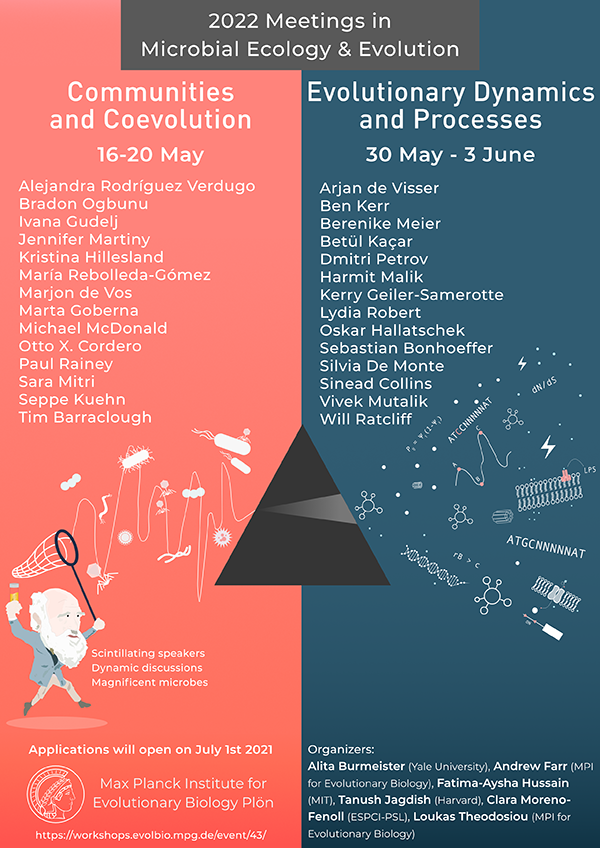Speaker
Description
In many natural environments, microorganisms self-assemble around heterogeneously distributed resource patches. The growth and collapse of populations on resource patches can unfold within spatial ranges of a few hundred micrometers or less, making such microscale ecosystems hotspots of biological interactions and nutrient fluxes. Despite the potential importance of patch-level dynamics for the large-scale evolution and function of microbial communities, we have not yet been able to delineate the ecological processes that control natural populations at the microscale. Here, we addressed this challenge in the context of microbially-mediated degradation of particulate organic matter by characterizing the natural marine communities that assembled on over one thousand individual microscale chitin particles. Through shotgun metagenomics, we found significant variation in microscale community composition despite the similarity in initial species pools across replicates. Strikingly, a subset of particles was highly populated by rare chitin-degrading strains; we hypothesized that their conditional success reflected the impact of stochastic colonization and growth on community assembly. In contrast to the conserved functional structures that emerge in ecosystems at larger scales, this taxonomic variability translated to a wide range of predicted chitinolytic abilities and growth returns at the level of individual particles. We found that predation by temperate bacteriophages -- especially of degrader strains that initiate community assembly on chitin particles -- was a significant contributor to the variability in the bacterial compositions and yields observed across communities. Our study suggests that initial stochasticity in assembly states at the microscale, amplified through spatially structured biotic interactions, may have significant consequences for the coexistence, evolution, and function of diverse bacterial and viral populations at larger scales.

